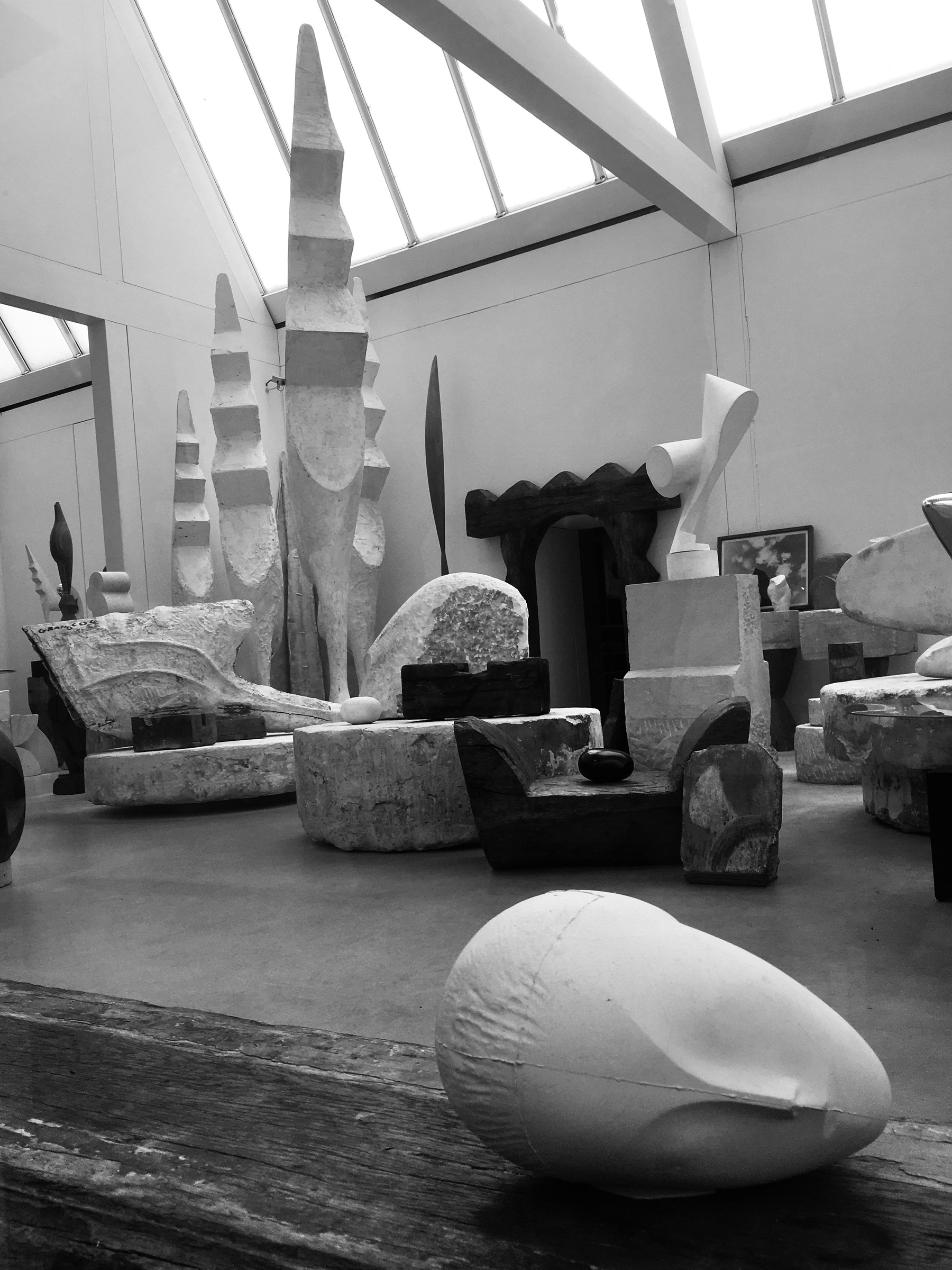-
Atelier Brancusi
Paris can sometimes be too much. When the noise, the crowds, the lost tourists, the sunlight glancing off the ornate facades all mingle together and reach deafening levels and I can no longer hear myself think, I like to go to the Atelier Brancusi. In what could be easily mistaken for a storage unit at the northwestern corner of the Centre Pompidou is a not so hidden, hidden haven.
When he died in 1957, Brancusi left his studio and all the works in it to the Museum of Modern Art in Paris with the caveat that it be displayed exactly as he had left it, the ensemble a work of art itself. It took decades before his express desire was honored and only then in a recreation of the studio designed by Renzo Piano as an addition to Centre Pompidou in 1997.
The entrance to the Atelier Brancusi is behind an ivy-clad wall and down nine steps. From the outside, it’s easy to imagine the space inside as sunken, dark and cramped. Instead, North facing skylights reach wide and fill the space with diffuse, bright light. The effect is that the limestone walls, expanses of glass, and speckled concrete floors appear deceptively soft.
The gallery itself is at first glance as if the artist himself had just left with his works haphazardly strewn about. It should feel cluttered. But Brancusi left nothing to chance. He was meticulous in how he placed his pieces. The stands of the sculptures are as much a piece of the artwork as the pieces themselves with plaster balanced on stone or wood. Wood balanced on wood or stone, brass on limestone balanced on cement. Each piece, a layering of textures and forms but maybe above all of reflected or absorbed light. Bird in Space, tenuously perched above a massive limestone fireplace. Four Giant Roosters in plaster reaching towards the sky together, flanked by Maiëstra in blue marble to the left and another Bird in Space, tinted grey to the right. They stand, imperious, with their chests puffed out facing Infinite Columns, as if in conversation or debate.
I come here for this very negotiation between objects and space. Their bodies, jagged edges and heavy bases, are still reaching, becoming weightless. I come to this sunken building, surrounded by stone and concrete so that for one infinite second, I join the conversation and I too, become weightless. Jagged edges and all.

-
This is my first post on micro.blog. I’m just giving it a whirl
subscribe via RSS